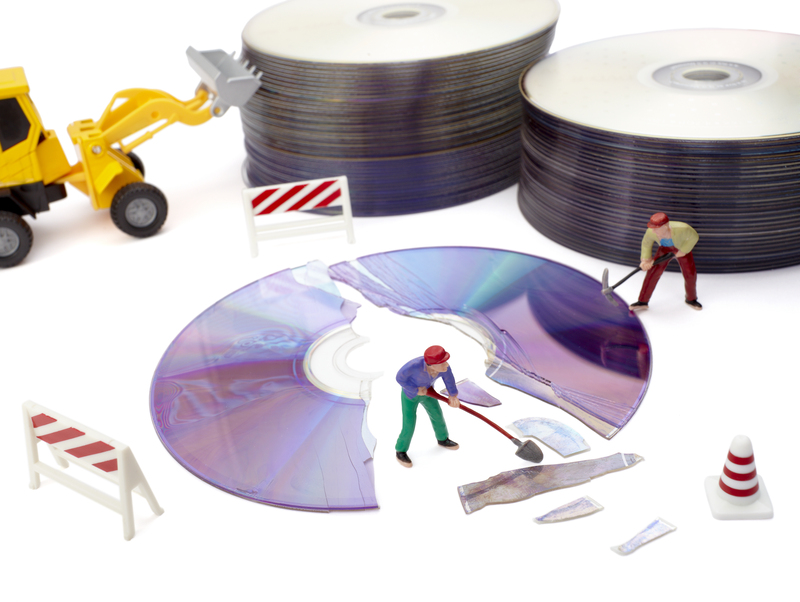Helping the Environment by Recycling Kitchenware
In today's environmentally conscious world, everyone is looking for practical ways to reduce their ecological footprint. One area that often goes overlooked is our kitchens. More specifically, *recycling kitchenware* is an impactful step we can all take toward a greener planet. This comprehensive article will guide you through the ins and outs of helping the environment by recycling kitchenware, including its importance, methods, and far-reaching benefits.

Why Recycling Kitchenware Matters
Kitchenware, from pots and pans to plates, cutlery, and glassware, makes up a significant portion of household waste. Most of these items, if sent to landfills, can take decades or even centuries to decompose. The raw materials used to create kitchenware - such as metals, plastics, glass, and ceramics - are resource-intensive to produce. By embracing the recycling of kitchenware, we significantly reduce waste, conserve natural resources, and minimize harmful emissions.
- Reducing landfill waste: Kitchenware that ends up in landfills contributes to pollution and greenhouse gases.
- Conserving resources: Recycling means less reliance on virgin materials, reducing extraction, manufacturing, and energy use.
- Minimizing pollutants: Certain kitchen items, like nonstick pans or plastics, can release toxins if they break down in nature.
- Encouraging a circular economy: By recycling or repurposing, items are kept in use for as long as possible.
By learning how to recycle kitchen utensils and other wares, you contribute to a sustainable future while potentially inspiring others to do the same.
Types of Kitchenware Suitable for Recycling
Not all kitchenware is created equally when it comes to recycling. Understanding what can and cannot be recycled is crucial to successful waste management. Let's break down the main categories:
1. Metal Kitchenware Recycling
Metal kitchenware, such as stainless steel pots, aluminum pans, and cutlery, is often highly recyclable. Metal is one of the most valuable and commonly recycled materials.
- Stainless steel: Most recycling centers accept stainless steel kitchenware.
- Aluminum cookware: Old baking sheets, cookware, and even foil can usually be recycled.
- Cast iron: These items are extremely durable, but they can also be melted down and repurposed.
Before recycling metal kitchenware, remove all non-metal parts such as plastic or wooden handles.
2. Glass and Ceramic Recycling
Recycling glassware and ceramics can be trickier. Many recycling programs do not accept ceramics or certain types of glass (like Pyrex or tempered glass) due to their high melting points.
- Drinking glasses and jars: Only plain glass (such as bottles and jars) is typically recyclable.
- Ceramic plates and mugs: Most curbside recycling won't take ceramics, but specialty recycling centers might.
- Broken dishes: Repurposing is often a better choice.
3. Plastic Kitchenware Recycling
Plastic utensils and gadgets are ubiquitous, but not all plastics are recyclable. Check local recycling codes to determine which plastics are accepted.
- Food storage containers: These often have recycling numbers on the bottom.
- Old Tupperware: Some plastics can only be recycled at specialty drop-offs.
- Plastic utensils: Usually made from non-recyclable materials; opt for reuse or donation.
4. Wooden and Bamboo Kitchenware
Wood and bamboo are natural materials that can often be composted or repurposed rather than recycled. Broken cutting boards and utensils can find new life as art projects, mulch, or garden markers.
How to Recycle Kitchenware Responsibly
Recycling kitchenware involves more than simply tossing items in a bin. Responsible recycling means understanding what your local facilities accept and preparing the items correctly.
1. Review Local Recycling Guidelines
- Contact your local municipality or recycling center to learn about specific kitchenware accepted.
- Some areas may offer specialty recycling events for hard-to-recycle items like ceramics or certain plastics.
2. Sort and Clean Items
- Always rinse kitchen items before recycling to avoid contaminating the recycling stream.
- Disassemble multi-material items (like baking pans with silicone grips or glass lids with metal rims) to separate different recyclables.
3. Donate Usable Items
Gently used kitchenware that still functions can be donated to thrift stores, shelters, or community organizations. Donation is an excellent way to help the environment by extending the life cycle of household goods.
4. Upcycling and Repurposing Kitchenware
Before discarding, consider creative ways to upcycle or repurpose old kitchenware. This method not only keeps items out of the landfill but also adds personality and utility to your home.
- Turn old mugs into planters or storage containers.
- Convert frying pans into wall art or clocks.
- Repurpose broken glass and ceramics for mosaic art projects.
- Use wooden spoons as garden markers or craft materials.
Sustainable Kitchenware Choices
Another crucial aspect of helping the environment by recycling kitchenware is rethinking what we buy in the first place. Choosing eco-friendly, recyclable, or compostable kitchenware reduces future waste.
Tips for Eco-Friendly Kitchenware Shopping
- Opt for glass, stainless steel, or bamboo over cheap plastics.
- Buy quality products designed to last, reducing replacement frequency.
- Look for products certified as recyclable, compostable, or made from recycled content.
- Avoid single-use items such as plastic cutlery, plates, and straws.
Benefits of Recycling Kitchen Utensils and Cookware
The environmental advantages of *recycling kitchenware* are significant and far-reaching. When you prioritize recycling and reusing, you are part of a larger movement reshaping our relationship with resources and waste.
- Reduced Carbon Footprint: Recycling metal and glass kitchenware consumes less energy than producing them from new materials, slashing greenhouse gas emissions.
- Conservation of Natural Resources: Every recycled item diminishes demand for mining, drilling, and harvesting for new resources.
- Pollution Reduction: Diverting items from landfills prevents the leaching of hazardous substances from nonstick coatings, plastics, and ceramics into soil and water.
- Less Clutter, More Order: Keeping your kitchen free from unused, broken, or redundant utensils benefits both your household and the planet.
Common Mistakes to Avoid When Recycling Kitchenware
Even with the best intentions, recycling efforts can go awry. Here are a few pitfalls to avoid:
- Wishcycling: Placing non-recyclable kitchenware in the recycling bin, hoping it will get recycled, can actually contaminate entire batches.
- Ignoring Preparation: Dirty or greasy kitchenware is often sent to the landfill, even if it's made from recyclable material.
- Forgetting Small Pieces: Items like bottle caps, metal fork tines, or ceramic shards need to be bundled together, as small items may fall through machinery.
- Overlooking Special Facilities: Many communities have specific centers for hard-to-recycle objects; it's worth doing a little research.
What Happens to Recycled Kitchenware?
Once your kitchenware is recycled, it begins a new journey. Here's what typically happens:
- Collection and Sorting: Items are sorted by material type and assessed for cleanliness and suitability.
- Processing: Recyclables are crushed, shredded, or melted down. Metals become scrap for new products; glass and ceramics get broken down for construction or insulation materials.
- Manufacture: Recycled materials are then used to produce new goods, such as car parts, construction supplies, or even new kitchenware.
- Back to Consumers: The cycle continues as these new materials are purchased again, creating a sustainable loop.

Encouraging Your Community to Recycle Kitchenware
If you want to maximize your impact, don't stop at your own kitchen. Raise awareness in your neighborhood by:
- Hosting a kitchenware swap or donation event.
- Creating informative flyers or social media posts about what and how to recycle.
- Volunteering with local environmental organizations.
- Advocating for greater kitchenware recycling programs in your community.
Conclusion: Your Role in a Sustainable Kitchen
Helping the environment by recycling kitchenware is a meaningful, accessible way to make an everyday difference. By carefully recycling, reusing, and choosing sustainable items, you're not just reducing waste--you're actively supporting a healthier planet, conserving precious resources, and leading by example. Whether you're a home cook, a student, or a professional, every action counts in our collective journey towards sustainability.
Remember: The next time you're ready to part with an old spatula, chipped mug, or dull knife, ask yourself, "How can I keep this out of the landfill?" Every plate, cup, or fork recycled is a small victory for the earth. Let's make a cleaner, greener kitchen a reality--one utensil at a time!
Tag: Kitchenware recycling, sustainable kitchen, reducing kitchen waste, eco-friendly kitchen, environmental kitchen tips.